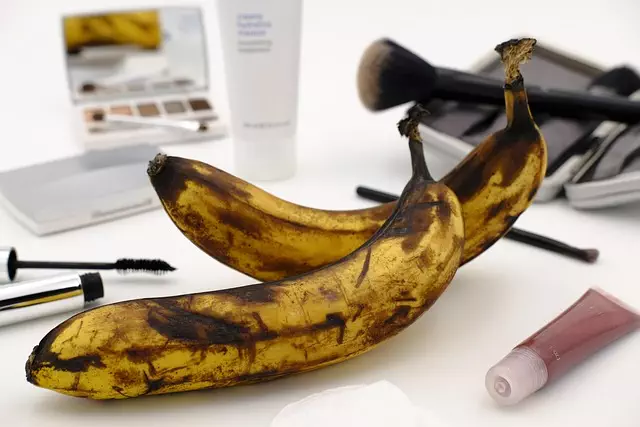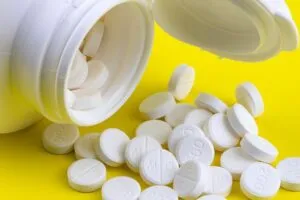Aging naturally affects skin through biological and environmental factors, leading to wrinkles caused by collagen breakdown, free radical damage, UV exposure, and cellular aging. Effective anti-aging treatments target these issues using antioxidants, retinoids, hydration, and barrier repair. Key strategies include neutralizing free radicals, stimulating collagen production, protecting from UV radiation, and maintaining skin barriers. Topical creams and serums with retinol, hyaluronic acid, and vitamin C are crucial, while in-clinic procedures like chemical peels and injectables offer advanced solutions. A healthy lifestyle with hydration, nutrition, exercise, sun protection, and sleep is vital for long-lasting youthful skin. Emerging technologies like peptides and microneedling promise non-invasive, tailored anti-aging treatments.
Uncover the secrets to battling wrinkles and reclaiming youthful skin with our comprehensive guide to anti-aging wrinkle care. In this article, we demystify the science behind aging, exploring the complex interplay of genetics, lifestyle, and environmental factors. From understanding common causes of premature wrinkling to discovering key components of effective treatments, you’ll gain insights into achieving and maintaining a radiant complexion. Learn about topical creams, powerful serums, advanced clinic procedures, and transformative lifestyle changes that constitute the multi-faceted approach to modern anti-aging treatment.
Understanding the Science Behind Aging and Wrinkles

Aging is a natural process that affects everyone, leading to visible changes in our skin over time. Understanding the science behind this process is crucial when it comes to developing effective anti-aging treatments. As we age, our skin undergoes several transformations due to biological and environmental factors. One of the primary causes of wrinkles is the breakdown of collagen and elastin fibers, which provide structure and elasticity to our skin. This degradation occurs as a result of free radical damage, UV exposure, and general cellular aging.
Various anti-aging treatments aim to combat these issues by targeting different aspects of the aging process. For instance, topical antioxidants can help neutralize free radicals, while retinoids stimulate collagen production. Additionally, some treatments focus on hydration and skin barrier repair to enhance elasticity. By combining these strategies, individuals can achieve better results in their quest for youthful-looking skin.
Common Causes of Premature Aging and Wrinkling

The skin’s natural aging process is a complex interplay of various internal and external factors. While the passage of time inevitably leaves its mark, understanding the common causes of premature aging can empower individuals to make informed choices for effective anti-aging treatments. Exposure to environmental stressors, such as UV radiation from the sun, plays a significant role in skin damage. The harmful effects of UV rays include breaking down collagen and elastin fibers, leading to reduced skin elasticity and the formation of wrinkles.
Another prominent factor is lifestyle choices, including poor diet and inadequate hydration, which can accelerate the aging process. Smoking, for instance, constricts blood vessels, hindering oxygen and nutrient delivery to the skin, resulting in a dull, aged appearance. Moreover, chronic stress has been linked to elevated levels of cortisol, a hormone that contributes to inflammation and breaks down collagen. Addressing these underlying causes through tailored anti-aging treatments is crucial for achieving and maintaining youthful-looking skin.
Key Components of Effective Anti-Aging Treatments

The effectiveness of any anti-aging treatment lies in its ability to target key components that contribute to skin aging. One of the primary focus areas is collagen production, a protein essential for skin elasticity and firmness. Advanced skincare formulas often incorporate ingredients like retinol, peptides, and vitamin C, which stimulate collagen synthesis while also reducing the appearance of fine lines and wrinkles. Additionally, hydration plays a crucial role in anti-aging care. Adequate moisture levels in the skin help maintain its barrier function, prevent dryness, and improve overall texture. Hyaluronic acid is a popular ingredient known for its powerful hydrating properties, ensuring the skin remains plump and youthful-looking.
Another vital component is protecting the skin from environmental damage. Free radicals generated by UV radiation and pollution are major contributors to premature aging. Anti-aging treatments that include antioxidants like green tea extract, vitamin E, and niacinamide help neutralize these free radicals, reducing oxidative stress on the skin cells. Furthermore, some treatments focus on improving skin cell turnover, ensuring old, damaged cells are replaced efficiently, leading to a more radiant and youthful complexion.
Topical Creams and Serums: The First Line of Defense

Topical creams and serums are often the first line of defense in any anti-aging treatment regimen. These highly concentrated formulations contain active ingredients that target specific signs of aging, such as fine lines, wrinkles, and loss of skin elasticity. Key components like retinol, hyaluronic acid, and vitamin C have been shown to stimulate collagen production, hydrate the skin, and protect against environmental damage.
When choosing an anti-aging cream or serum, it’s essential to consider your skin type and specific concerns. For instance, those with dry skin may benefit more from rich, moisturizing creams, while oily skin types might prefer lighter, gel-based formulas. Regular use of these products can significantly improve the overall appearance and health of your skin, making them indispensable in any comprehensive anti-aging routine.
In-Clinic Procedures for Advanced Anti-Aging Care

For those seeking advanced anti-aging care, in-clinic procedures offer a range of effective solutions. These professional treatments go beyond daily skincare routines and provide targeted approaches to combat signs of aging. One popular option is chemical peels, which use chemicals to exfoliate the skin, reducing fine lines, wrinkles, and uneven skin tone. Another highly regarded procedure is microdermabrasion, a mechanical peeling technique that removes dead skin cells and stimulates collagen production, resulting in smoother, more youthful-looking skin.
In-clinic anti-aging treatments also include intense pulse light (IPL) therapy, which uses light energy to target pigmentation issues and broken blood vessels. This non-invasive procedure is particularly effective for those with age spots or sun damage. Additionally, various injectable therapies, such as Botox and filler injections, are commonly used to relax facial muscles and restore volume loss, effectively minimizing the appearance of wrinkles.
Lifestyle Changes to Support Long-Lasting Youthful Skin

Adopting a healthier lifestyle can significantly contribute to long-lasting youthful skin and effective anti-aging treatment. One key aspect is staying hydrated; drinking an ample amount of water daily supports skin elasticity and overall health. Additionally, prioritizing a balanced diet rich in antioxidants, vitamins, and minerals from fruits, vegetables, and whole grains nourishes the skin from within, promoting a radiant complexion. Regular exercise not only benefits physical health but also boosts blood circulation, ensuring nutrients reach all skin cells effectively.
Beyond that, sun protection is non-negotiable. The sun’s UV rays are primary contributors to premature aging and wrinkles. Daily use of sunscreen with SPF 30 or higher, along with limiting sun exposure during peak hours, can prevent damage and maintain skin’s youthful appearance. Also, sufficient sleep allows the body to repair and regenerate cells, reflecting in healthier, more vibrant skin.
Emerging Technologies Shaping the Future of Anti-Aging

The future of anti-aging wrinkle care is being shaped by emerging technologies that promise to revolutionize the way we approach skin rejuvenation. One notable advancement is the use of advanced peptides and growth factors in anti-aging treatments. These powerful compounds can stimulate collagen production, improve skin elasticity, and reduce the appearance of fine lines and wrinkles.
Additionally, technologies like fractional laser therapy and microneedling are gaining popularity for their ability to target specific skin concerns with precision. Fractional lasers create tiny controlled injuries, stimulating the body’s natural healing process and boosting collagen synthesis. Microneedling, on the other hand, uses fine needles to puncture the skin, triggering a response that can improve texture, reduce scars, and minimize wrinkles. These innovative techniques offer non-invasive yet highly effective anti-aging treatments, ensuring that future skincare routines will be more advanced and tailored to individual needs.
